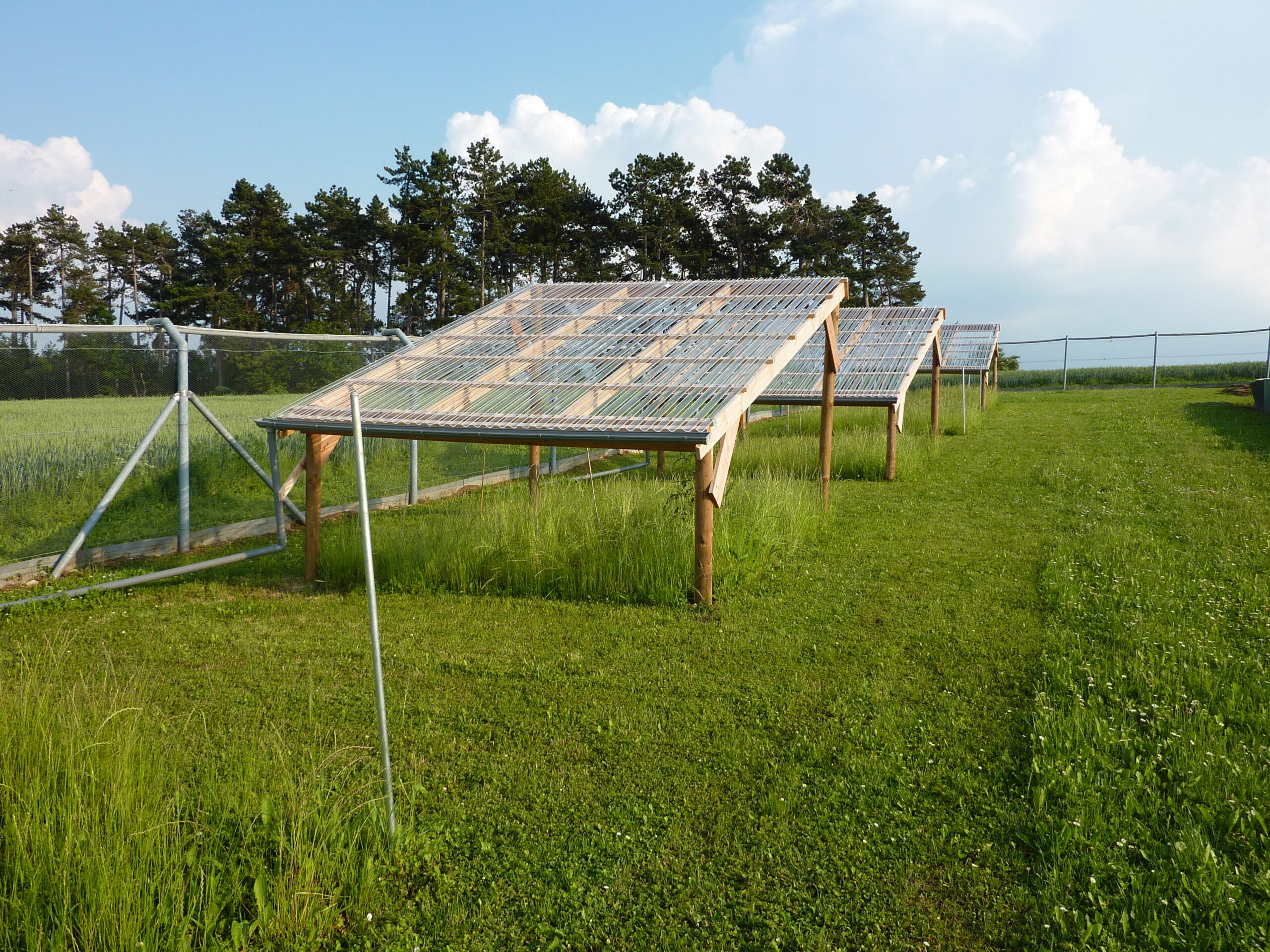Based on a press release by Colorado State University
A global research effort involving 170 researchers across six continents shows that extreme, years-long drought conditions significantly reduce the long-term health of grasslands and shrublands – ecosystems that cover nearly half the planet and store over 30% of global carbon.
Until now, due to the historic rarity of extreme droughts, researchers have struggled to estimate the actual consequences of these conditions in both the near and long-term. One historical example is the “Dust Bowl” of the 1930s in the United States, which caused widespread ecological and economic harm.
Published in Science, the findings are particularly relevant as climate change increases the possibility of more severe droughts in the future.
Led by Colorado State University (CSU) with participation of researchers from the German Centre for Integrative Biodiversity Research (iDiv), the University of Leipzig, and the Helmholtz Centre for Environmental Research (UFZ), the research shows that losses in plant biomass production were more than twice as high after four years of continued extreme drought compared to losses from droughts of moderate intensity. Grasslands and shrublands also lose their ability to recover over time under prolonged dry conditions, leading to effects like soil erosion and dust storms.
“We show that – when combined – extreme, multi-year droughts have even more profound effects than a single year of extreme drought or multi-year moderate droughts,” explains co-author Professor Melinda Smith, who led the study with first author Dr Timothy Ohlert.
Researching the effect of droughts worldwide
As part of the International Drought Experiment, researchers constructed roofs that reduced precipitation by a targeted amount over a four-year period in grassland and shrubland ecosystems across six continents. By simulating 1-in-100-year extreme drought conditions, the team was able to study the long- and short-term responses. Variations in precipitation, as well as soil and vegetation across continents, meant different sites experienced distinct combinations of moderate and extreme drought years – providing unique experimental conditions that informed this study.
Data from the DroughtNet sites at the UFZ research station in Bad Lauchstädt, Germany and the University of Jena in Jena-Remderoda played a key role in the study. At the Jena site, for example, reduced rainfall over four years resulted in less biomass loss than expected, highlighting how ecosystems vary in resilience.
Co-lead of the Bad Lauchstädt site and professor at Leipzig University and iDiv, Dr. Nico Eisenhauer, says: “Given the ubiquity of global change, multi-year experiments are highly relevant to detect realistic ecosystem consequences that might be underestimated based on short-term studies.”
Indeed, the findings suggest that the negative impacts on plant productivity are also likely to be much larger than previously expected under both extreme and prolonged drought conditions. Grasslands and shrublands play a large role in balancing and facilitating carbon uptake and sequestration as biomass globally. That means changes to these ecosystems caused by drought could have wide-ranging impacts.
These findings underline that extreme weather events like droughts are key aspects of environmental change that threaten ecosystem integrity around the world.
Original publication
(Researchers with iDiv affiliation bolded)
Ohlert T., Smith M., Collins S., Knapp A., Dukes J., Sala O., Wilkins K., Munson S., Anderson M., Avolio M., Chen A., Hayden M., Holdrege M., Slette I., Wilfahrt P., Beier C., Fraser L., Jentsch A., Loik M., Luo Y., Maestre F., Phillips R., Power S., Yahdjian L., Yu Q., Chen A., Felton A., Gherardi L., Lyon N., Abdoli H., Abedi M., Alberti J., Arroyo A., Asbjornsen H., Auge H., Bachle S., Bahn M., Bartholomew D., Batbaatar A., Bauerle T., Beard K., Behn K., Beil I., Biancari L., Blindow I., Bondaruk V., Borer E., Bork E., Bruschetti C., Castillioni K., Byrne K., Cahill J., Calvo D., Carbognani M., Carlyle C., Castillo-Garcia M., Chandregowda M., Chang S., Chieppa J., Churchill A., Cianciaruso M., Cordeiro A., Cousins S., Cusack D., Dahlke S., Daleo P., Dietterich L., Dubbert M., Eisenhauer N., Forte T., Funk F., Galiano D., Greenville A., Isbell F., Han L., Haugum S., Hautier Y., Hector A., Henry H., Hoss D., Jordan S., Ke Y., Kelly E., Koerner S., Kreyling J., Kröel-Dulay G., Kröpfl A., Kübert A., Kulmatiski A., Lamb E., Larsen K., Lee S., Luan J., Limbu S., Linstädter A., Liu S., Longo G., Loydi A., Lubbe F., Malyshev A., McIntire C., Metcalfe D., Mokoka M., Mori A., Mudongo E., Newman G., Nielsen U., Ochoa-Hueso R., O’Connor R., Ogaya R., Oñatibia G., Orbán I., Osborne B., Otfinowski R., Pärtel M., Pascual J., Peñuelas J., Peri P., Pescador D., Peter G., Piñeiro-Guerra J., Ploughe L., Plowes R., Petraglia A., Picon-Cochard C., Pillar V., Portales-Reyes C., Prober S., Pueyo Y., Rahmati G., Reed S., Rodríguez D., Sánchez A., Rogers W., Roscher C., Rowley D., Santos B., Schellenberg M., Scherer-Lorenzen M., Seabloom E., Shen R., Shi B., Souza L., Stampfli A., Standish R., Sternberg M., Sun W., Sünnemann M., Tedder M., Terry T., Thorvaldsen P., Tielbörger K., Tissink M., Vadeboncoeur M., Valdecantos A., van den Brink L., Vandvik V., Velle L., Wanke S., Wardle G., Wei C., Werner C., Wiehl G., Williams J., Wolf A., Wu H., Xu C., Yang X., Yang Y., Yost J., Young A., Yue P., Zeberio J., Zeiter M., Zhang H., Zhu J., Zuo X. (2025). Drought intensity and duration interact to magnify losses in primary productivity. Science. DOI: 10.1126/science.ads8144
Contact
Prof Dr Nico Eisenhauer
Head of the research group Experimental Interaction Ecology
German Centre for Integrative Biodiversity Research (iDiv) Halle-Jena-Leipzig
Leipzig University
Phone: +49 341 97 33167
Email: nico.eisenhauer@idiv.de
Kati Kietzmann
Media and Communications
German Centre for Integrative Biodiversity Research (iDiv) Halle-Jena-Leipzig
Phone: +49 341 97 39222
Email: kati.kietzmann@idiv.de
Researchers constructed roofs that reduced precipitation by a targeted amount over a four-year period in grassland and shrubland ecosystems
Please note: Use of the pictures provided by iDiv is permitted for reports related to this media release only, and under the condition that credit is given to the picture originator.
